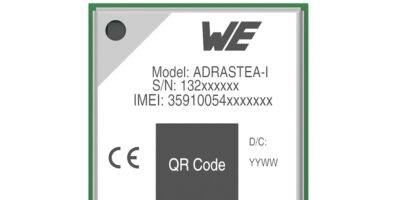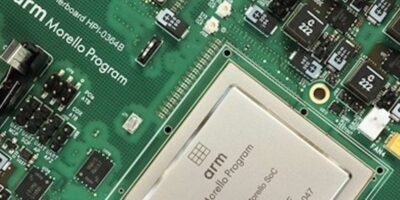Industrial IoT, connected or smart agriculture, logistics and smart metering applications can use the Adrastea-I module by Würth Elektronik. The low power, multi-band LTE-M and NB-IoT module measures just 13.4 x 14.6 x 1.85mm but integrates GNSS, an Arm Cortex M4 and 1Mbyte flash memory which is reserved for user application development.
The module is based on the Sony Altair ALT1250 chipset. Certified by Deutsche Telekom, the Adrastea-I module can be quickly integrated into end products without additional labels, industry-specific certifications (GCF) and operator approvals whenever a Deutsche Telekom IoT connectivity (SIM card) is used.
The Adrastea-I module has multi-band support and can be operated through one of two cellular communication technologies (LTE-M and NB-IoT). This enables the support for international, multi-regional coverage. For example, wherever LTE-M does not have coverage, the Adrastea-I can be configured to use NB-IoT instead, and vice versa. The module is 3GPP Release-13-compliant, upgradable to Release-14. Adrastea-I module is optimised for low power consumption and enhanced coverage. Its small dimensions make it suitable for size-constrained applications such as wearables.
The Adrastea-I module has integrated GNSS, supporting both GPS and GLONASS satellite systems. Integrated GNSS make it suitable for asset tracking applications where infrequent position updates are required.
The Adrastea-I module’s integrated Arm Cortex M4 microcontroller, 1Mbyte flash and 256Kbyte RAM are available exclusively for customer application development.
Sony Altair provides a software development kit (SDK), sample code examples, documentation and tools to accelerate innovation and product development on the integrated Arm Cortex M4 microcontroller.
Deutsche Telekom has certified the Adrastea-I module for multiple European LTE-M and NB-IoT networks. Würth Elektronik eiSos maintains a partnership with Deutsche Telekom IoT for Connectivity (IoT SIM card). The certification confirms that end-products using the Adrastea-I module will interoperate properly on Deutsche Telekom’s various networks.
The Adrastea-I module and its evaluation kit are available in stock now, confirmed Ravindra Singh, product manager, at Würth Elektronik eiSos.







